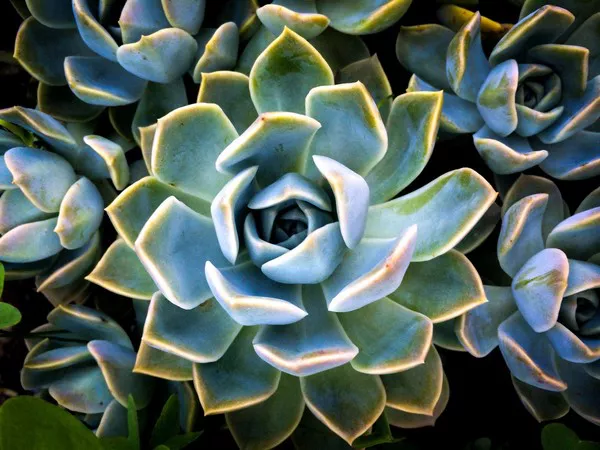Cultivating a thriving indoor succulent garden is a rewarding endeavor, but it comes with the responsibility of understanding the unique watering needs of these resilient plants. The key to success lies in achieving a delicate balance, providing just the right amount of water to keep your succulents healthy and vibrant.
Understanding the Unique Needs of Succulents
Succulents, as a broad category of plants, encompass a diverse range of species with varying water requirements. These resilient plants are well-adapted to arid environments, characterized by their ability to store water in their leaves, stems, or roots. The keyword “succulent” encompasses a variety of species, including Echeveria, Aloe, and Haworthia, each with its specific needs. Recognizing the diversity within this category is crucial for tailoring your watering routine to the individual requirements of your succulents.
Choosing the Right Potting Mix
The first step in ensuring proper succulent care is selecting an appropriate potting mix. Succulents thrive in well-draining soil that prevents waterlogged conditions, which can lead to root rot. Opt for a specialized succulent or cactus mix that promotes quick drainage while retaining enough moisture for the plant to access when needed. The right potting mix sets the foundation for a successful succulent watering regimen.
Establishing a Consistent Watering Schedule
Consistency is key when it comes to watering indoor succulents. Establishing a regular schedule helps mimic the natural rainfall patterns these plants are accustomed to in their native environments. However, the frequency of watering will depend on various factors, including the succulent species, pot size, and environmental conditions. It’s crucial to emphasize that overwatering is a common pitfall. The goal is to maintain soil moisture without saturating the root system excessively.
Monitoring Environmental Factors
To become a succulent watering expert, it’s essential to pay attention to the environmental factors that can influence the moisture needs of your plants. Factors such as temperature, humidity, and sunlight exposure play a significant role in determining how quickly the soil dries out. Succulents, being adaptable plants, can adjust their metabolic processes based on environmental cues. Therefore, regularly assess the conditions in your indoor space and adjust your watering routine accordingly.
Implementing the “Soak and Dry” Method
One effective technique for watering succulents is the “soak and dry” method. This approach involves thoroughly watering the soil until water drains out of the bottom of the pot, ensuring that the entire root system receives moisture. After this thorough soaking, allow the soil to dry out completely before the next watering. This method mimics the natural cycles of rainfall and drought that succulents experience in their native habitats, promoting healthy root development and preventing issues associated with overwatering.
Choosing the Right Watering Technique
The method of watering is as crucial as the frequency. When it comes to succulents, it’s advisable to water at the base of the plant, directly onto the soil, rather than overhead. Watering from above can lead to moisture sitting in the rosettes of certain succulent varieties, making them more susceptible to rot. Using a watering can with a narrow spout or a drip irrigation system allows for precise watering at the soil level, minimizing the risk of water pooling in the leaves.
Considering Seasonal Variations
The changing seasons bring about fluctuations in temperature, daylight hours, and humidity levels, influencing the water requirements of indoor succulents. During the growing season, typically spring and summer, succulents are more active and may require more frequent watering. Conversely, in the dormant winter months, when growth slows down, reduce the watering frequency to prevent issues associated with overhydration. Adjusting your watering routine according to seasonal variations is essential for maintaining optimal succulent health.
Monitoring Signs of Overwatering and Underwatering
To truly excel in succulent care, it’s crucial to recognize the telltale signs of both overwatering and underwatering. Overwatering symptoms include yellowing or translucent leaves, mushy stems, and an unpleasant, musty smell emanating from the soil. On the other hand, underwatered succulents may display shriveled, wrinkled leaves and a generally dehydrated appearance. Regularly inspecting your plants for these indicators allows for timely adjustments to your watering routine, ensuring the overall well-being of your succulents.
Utilizing Self-Watering Pots
For those seeking a hands-off approach to succulent care, self-watering pots can be a valuable investment. These pots typically feature a reservoir at the bottom that allows the plant to draw water as needed. While convenient, it’s essential to exercise caution and monitor the moisture levels to prevent overwatering. The key is to strike a balance between providing a consistent water source and allowing the soil to dry out adequately between waterings.
Conclusion
Mastering the art of watering indoor succulents is a journey that requires patience, observation, and a deep understanding of your plants’ unique needs. By tailoring your watering routine to the specific requirements of each succulent species, choosing the right potting mix, and implementing effective watering techniques, you can create an optimal environment for these resilient plants to thrive. Regular monitoring, coupled with the ability to adjust your approach based on environmental factors and seasonal variations, ensures that your indoor succulent garden becomes a flourishing testament to your expertise in succulent care. Remember, the key to success lies in achieving that delicate balance – providing just enough moisture to keep your succulents happy and healthy.


